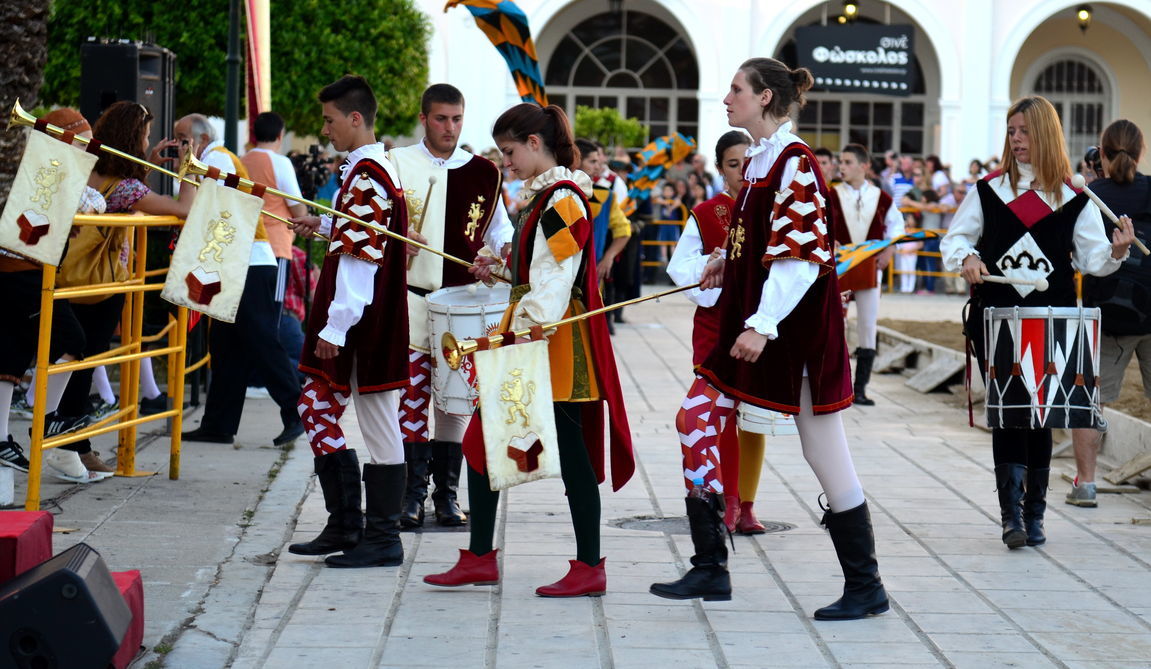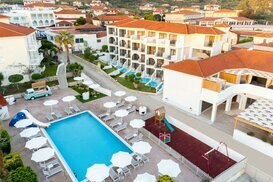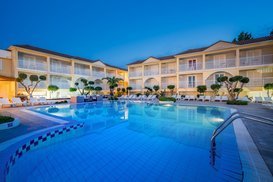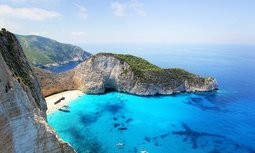
Become Wiser
Carnival in Zakynthos
Period of Occasion: The last 15 days of February lasting 2 weeks.
If you arrive unprepared into the Zakynthian carnival, you will be very surprised in what your eyes will see. It does not seem to be Greek at all, with all that is happening in the streets. More or less three weeks per year are covered by the carnival, with dances, parties, parades and theatrical performances. Not only in the capital, but on the whole island.
The history of carnival in Zakynthos
The Zakynthian carnival goes back to the Venetian rule over the island. It is believed that it is an imitation of the Venetian carnival and the Italian Commedia dell`Arte. At least one performance of the Commedia dell’Arte is proved to have taken place in 1611 in Crete. After the fall of Handakas (Heraklion) in 1669, many Cretan artists fled to Zakynthos, and had a great influence on art and music, literature and theatre of the island. Wherever the origin of the Zakynthian carnival is, its similarity to the Venetian is obvious.
In the carnival of the 17th Century, it was allowed for the inhabitants to cover their faces with masks and saunter down the streets and squares. The rich organized dance balls, the common people amused themselves in so called ‘’omilies“.
That is the purest and most complex form of popular theatre folk poems, love stories and satires with some current political implications. All roles, including the female, were played by men. They were presented on Zakynthos since the mid-17th Century onwards (1. Omilia took place in 1666 on the main square of Zante town, since 1780 they are also played in the villages. Originally, the performances started on a Sunday morning, at noon on other days. Usually they were held in front of the houses of the rich, and after the performance two masked men collected money from the spectators on the street and on the balconies. Greek and international classical stage plays, broadcasted by local folk poets in Zakynthian dialect, were performed as „omilies“for example, Erotokritos, Erofili, Romeo and Julieta..
Modern continuation of the tradition
Until the beginning of the 19th Century, the Zakynthian carnival was very famous and visitors from the Peloponnese and from around the country came to this event onto the island. Thereafter, the tradition gradually fell into oblivion until it was successfully revived in recent years. In the villages they rehearse the omilies from Christmas on, and on carnival – from the Thursday before Carnival (Tsiknopempti) until Cheese Sunday (Kyriaki tis Tyrinis) they perform them.
Carnival starts every year on the Sunday of the customs officers and Pharisees, the fifth Sunday before lent. In the three weeks prior to carnival Monday people stop eating meat (Latin carne = meat and vale = goodbye), they are followed by 40 days of fasting, which are called „Sarakosti“, in preparation for Easter.
1. Sunday (Tou Asotou – Gourounokyriaki)
The proclaimers go through the streets and announce the beginning of the Zakynthian carnival. This is followed by the days of the omilies and village funfairs.
Thursday before Carnival (Tsiknopempti)
The king of carnival enters into the capital of the island.
2. Sunday (Piccolo Carnival)
Parade of the street carnival.
3. Friday – Cheese Sunday (Kyriaki tis Tyrinis)
Big Carnival parade with many satirical sketches. Two old Zakynthian traditions were revived in recent years: the „giostra“- a sporting contest on horseback, and the Venetian wedding, both with gorgeous costumes and masks, and with lively participation of the population. Even the special carnival dance, the so called „Gaitanaki“ is performed again. The day ends with the burial of the mask (Povero Carnival). The magnificent funerary reaches down to the pier of the harbour, where the carnival king is burnt.
Green Monday
During the last week of carnival, you can buy octagonal kites everywhere. Now on a Green Monday, people go up to the hills and let them fly. If the weather allows it, a picnic will also take place – as a last dining experience before lent.
The big Event Giostra
Gkiostra is one of the oldest events of Zakynthian carnival. Along with the dances, which were conducted mainly in the luxurious halls of the two casinos (Romianiko and Lompardiano) and the famous and laofileis "Speeches" (street theater), which were represented by people in open spaces, emphasizing carnival celebrations. Participants claiming the prize, which was a silver sword for the first and a pair of silver spurs for the second, and the honor of a woman for the sake of which were struggling to win.
Giostra, had two forms of sports. The first was that of the ring. In such a contestant Knight should obtain a small ring, which was hanging from a wooden construction. The second was the Gkiostra Mascaron Moro. In this knight was to cut the spear of the wing, which was placed a human head in clay, dark color (for this reason it was called and the Gkiostra Sarakinos). Followed by large, often several days feast at home, the winner’s name was written in a special, honorary book.
In the noble part Gkiostra only exceptional rich people were able to take part, whose family name was registered in Chrysovivlo the Nobles (Libro d 'Oro). Features preserved by various historians to see it descended to the city and even residents of the most remote villages could take part too. It is no coincidence, indeed, the early Gkiostra passed the scholarly and the popular theater of the island (Erotokritos, noble), and in the literature (Dion. Romas, Andr. Avouris).
In recent years Gkiostra Zante revived by the non-profit organization «Giostra di Zante», which is located on the island and for the effective restoration of happening in Zakynthos Carnival, and scientific research into the history and evolution . The event takes place the last weekend of Carnival (Cheesefare). It begins with a parade, which starts from the historic plateau of St. Paul and, after crossing the city center, a central square, Dionysios Solomos, which conducted the event.
The procession involving hundreds of friends of the Society, and other Zakynthians or visitors of our island, dressed in costumes typical season, which are manufactured with care and after historical research, based on texts researchers, family portraits and paintings depicting processions of the era of the Venetian period.
The sport of Gkiostras takes place in Solomos Square. Precedes entry of the knights and the announcement of their participation in the crowd is held by the preacher. Here the choice of Ones, where for the sake of the squad, posting of the coat of arms and swearing, for that all equestrian regulations.
Then, the announcement of Prevedourou, conducts the event.The fighters on horseback try to get the ring and to demonstrate braveness to the committee of judges. Finally the winner gets the prize and goes on horseback having on the back of the horse for the girl.
See relevant photos on http://www.giostradizante.gr/gr-photogallery.php
If you are interested to visit one of our hotels during Carnival period have a look at our special offers coming online prior to the event.





